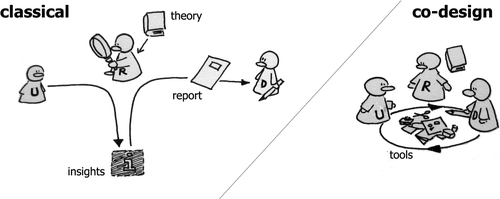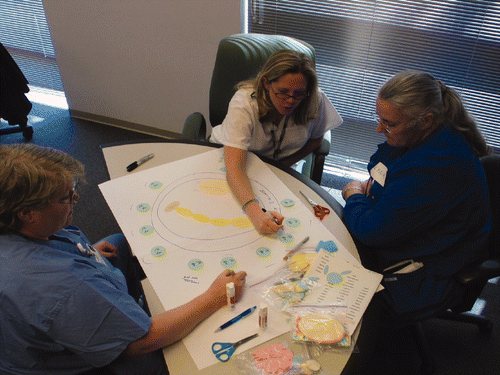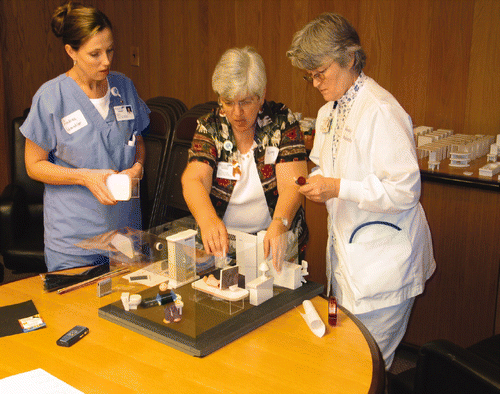Figures & data
Figure 1. The current landscape of human-centered design research as practiced in the design and development of products and services.

Figure 2. The front end of the design process has been growing as designers move closer to the future users of what they design.

Table 1. A snapshot in time of traditional and emerging design practices.
Figure 3. Classical roles of users, researchers, and designers in the design process (on the left) and how they are merging in the co-designing process (on the right).

Table 2. Four levels of creativity.
Figure 4. Tools and techniques support the user taking the role of an experienced expert. This photograph shows a presentation technique with a cartoonesque TV-frame that can help shy people to express their opinions more readily (see van Rijn and Stappers 2007).


